
Featured Blog | This community-written post highlights the best of what the game industry has to offer. Read more like it on the Game Developer Blogs.
Plants - the Supporting Actors
An indie dev discovers that the supporting background foliage can be just as important - both aesthetically and historically - as the bigger "characters" like trees and cliffs.

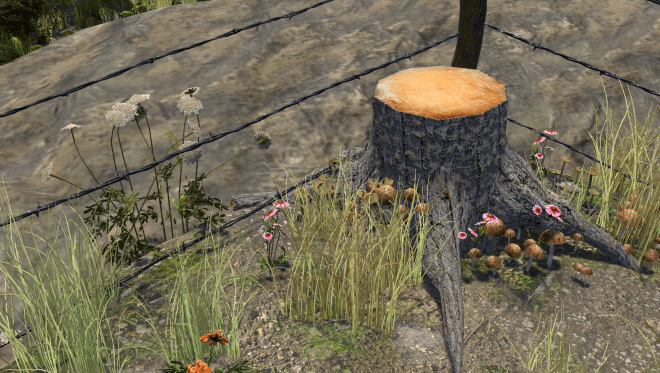 Various plants filling in as groundcover in Tombeaux
Various plants filling in as groundcover in Tombeaux
Last month, I posted about the importance of trees (namely, the White Pine) in my game, Tombeaux (tombeauxgame.wordpress.com/). The trees are essentially characters in my game, with a focus on their historic, environmental, and commercial value. I'd like to follow-up with a sister post, about some of the smaller foliage elements - the supporting actors - that are scattered around the river scenes of Tombeaux.
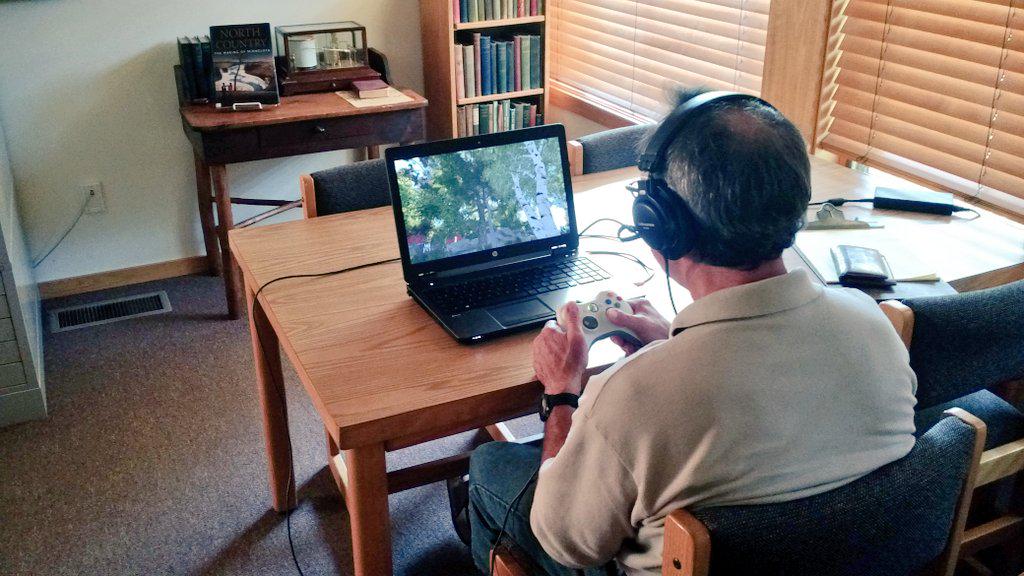 A scientist from the St. Croix Watershed Research Station, playtesting Tombeaux (photo courtesy Greg Seitz)
A scientist from the St. Croix Watershed Research Station, playtesting Tombeaux (photo courtesy Greg Seitz)
I once again returned to the source - the river - to get the evidence I would need. Through consultation with scientists at the Science Museum of Minnesota's St. Croix Watershed Research Station and a trip out on to the St. Croix, I spent a mid-August day doing some field research that would help me refine my focus (I was also able to get some valuable playtesting time in to the trip).
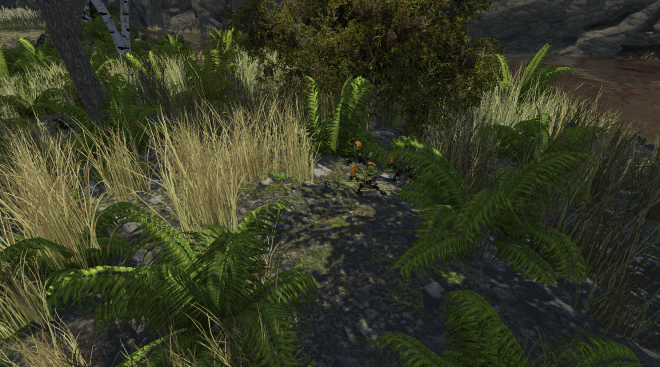 Foliage in Tombeaux
Foliage in Tombeaux
There are a myriad of common plants one might find in a variety of natural settings (around the world), whether they be prairies, forests, or rivers. As examples, daisies, queen anne's lace, cattails, ferns, knapweed, various grasses, and mushrooms are found (and easily recognized) by people around the country, and sometimes world. Plants like these are also native to the St. Croix region, and thus necessary elements to my game, providing the "filler" that I am looking for regarding ground cover around the river. Just as with the trees, I used a fantastic program called Speedtree to create all of my plants. In a few cases, I was able to employ and modify the template of a plant they had already created. But in most cases I found that it was necessary to strip down the structure of a plant to create a new, unique looking species that would fit my specific needs.
 Photo of Wild Celery
Photo of Wild Celery
In addition to the common plants mentioned above, there were a few unique plants that I knew I would need to create and represent well in the game, due to either their history or their "prolific-ness" on the river. Regarding the latter, wild celery (Vallisneria americana) is in fact a frequently found piece of vegetation around the country and world, but also very unique to the St. Croix. It's a type of "tape grass" found in freshwater environs and is commonly sought after by waterfowl; it has a beautiful movement as it flows with the underwater currents. When one is on the St. Croix, the plant seems to be everywhere - serving as both the bane of the fisherman's motor and also dinner for a duck.
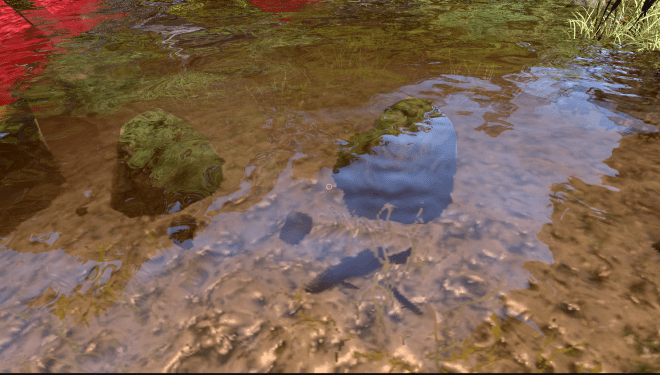 Wild Celery (and fish!) in a shallow river area of Tombeaux
Wild Celery (and fish!) in a shallow river area of Tombeaux
I wanted to be sure to represent this plant - even if in a subtle way - in Tombeaux. Making it in Speedtree was somewhat easy - I first created a simple grass cluster, and applied a subtle amount of force to the mesh, which resulted in a wavy feature that seemed to fit well with the natural flow of wild celery. When a slow, weak wind force was applied, it gave the look of a grass moving underwater.
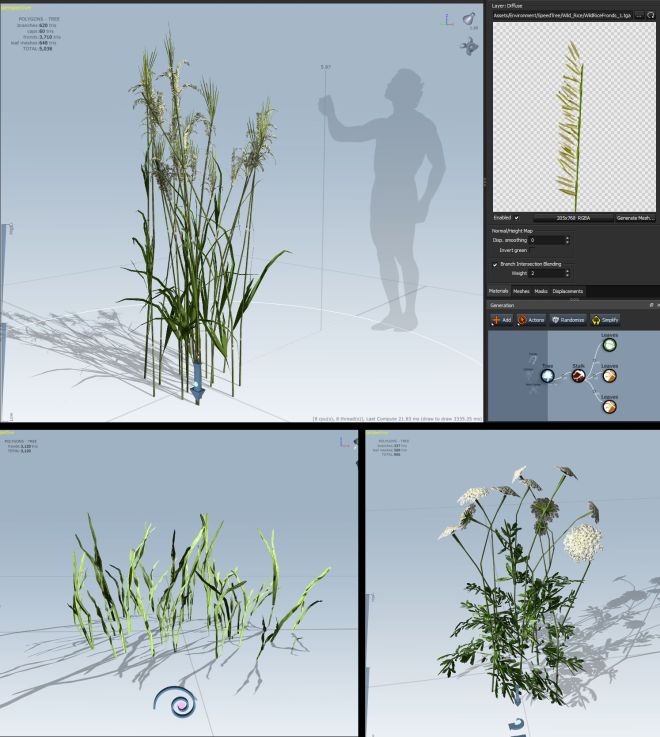 Using Speedtree - Wild Rice (Top), Wild Celery (Bottom Left), & Queen Anne's Lace (Bottom Right)
Using Speedtree - Wild Rice (Top), Wild Celery (Bottom Left), & Queen Anne's Lace (Bottom Right)
The second unique plant was a bit trickier. Northern Wild Rice (Zizania palustris) is a well-known upper-Midwest staple, especially in its final form on the dinner table (it is not actually a form of rice, but a grass with grains growing from it). This plant is particularly important to Tombeaux, due to its historical significance in the Ojibwe culture (both in the past and still today). The harvesting and preparation of wild rice is an art in itself, implementing a series of tools and extremely involved processes, including the use of canoes, knockers (large wooden sticks that remove the grain without damaging the plant), and winnowing baskets that are made from birch bark.
 Photo of Wild Rice
Photo of Wild Rice
When the St. Croix and surrounding tributaries were completely flooded due to logging (with both high water and the presence of logs), the wild rice began to dwindle. With a spiritual, cultural, and economic way of life for such a large population disappearing, it foretold of what was to come with land and rights also going by the wayside. My use of the plant in Tombeaux thus has both historical and environmental intentions, hoping that it catches the eye and interest of a player to learn more.
 Drawing of Wild Rice Harvest by S. Eastman
Drawing of Wild Rice Harvest by S. Eastman
Due to it growing so thick in a natural environment, I wanted to make the wall of wild rice exactly that - a thick collection that swayed in the wind, not allowing the player to navigate beyond its edge. In the game, I'll have various tools and canoes nearby, to provide the story of this important part in Ojibwe culture to the player to observe and consider. Using photos from wild rice plants, I applied textures and wind properties to the plants in Speedtree, to give them as real a representation of the actual plant as possible.
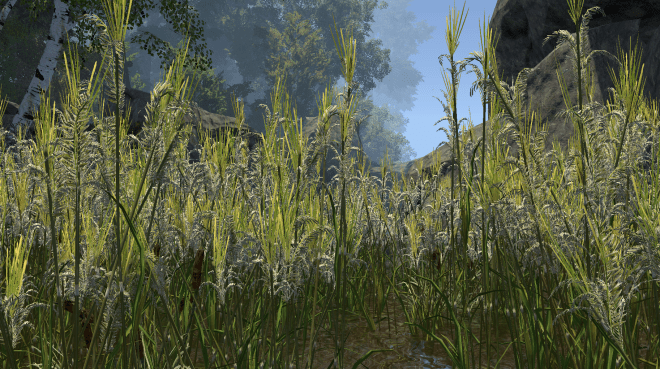 A thick wall of wild rice in Tombeaux
A thick wall of wild rice in Tombeaux
I hope this brief glimpse into some of the "supporting actors" of Tombeaux's environment has helped you gain a better understanding for both the process and the meaning behind their creation.
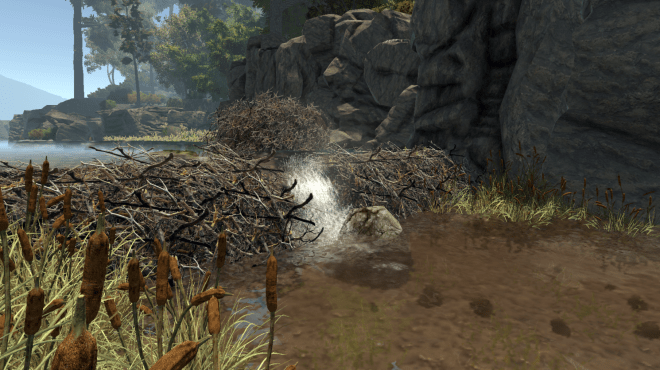 Looking past the cattails at a beaver dam in Tombeaux The full post, as well as others, can be found at: https://tombeauxgame.wordpress.com/ Follow this game on itch.io & Steam Concept Page
Looking past the cattails at a beaver dam in Tombeaux The full post, as well as others, can be found at: https://tombeauxgame.wordpress.com/ Follow this game on itch.io & Steam Concept Page
Read more about:
Featured BlogsAbout the Author(s)
You May Also Like













